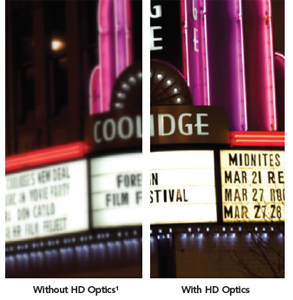Are you having trouble with dizziness or disorientation? Does too much motion around you cause you to feel overwhelmed?
You may be suffering from vertical heterophoria.
Here are our top 6 FAQs about vertical heterophoria:
Q1: What is vertical heterophoria?
Vertical heterophoria is a binocular vision problem that can occur when one eye is higher than the other. Though in many cases this misalignment can be so slight that it’s unnoticeable to others, it can still cause major vision issues.
Even the slightest misalignment can lead to differences in the visual information each eye sends to the brain. As a result, the muscles of the eye need to work extra hard to reconcile the two images in order to see clearly. Over time, this constant need to adjust causes strain on the eye muscles, leading to a number of uncomfortable symptoms.
Q2: What causes vertical heterophoria?
In most cases, vertical heterophoria is a condition that a person is born with. Due to our brain’s remarkable ability to compensate and adapt, some people can go many years without feeling the effects of vertical heterophoria. Others may experience mild to severe symptoms, but have no idea what is causing them.
Concussions and other traumatic brain and eye injuries can also cause symptoms of vertical heterophoria to surface, or worsen the symptoms experienced by those already dealing with them.
Q3: What are the symptoms of vertical heterophoria?
A person with vertical heterophoria often does not experience symptoms all the time. In fact, symptoms may not be felt at all for long periods of time, and come on suddenly as a result of fatigue, sudden head movements or other factors.
Symptoms may include:
- Dizziness
- Nausea
- A feeling of disorientation from too much visual stimuli
- Sinus pain or pressure or a feeling of heaviness around the top of the head
- Pain when moving the eyes
- An unsteady feeling or dizziness while walking
- Motion sickness
- Uneasiness when in a space with tall ceilings
- Headaches, from minor aches around or behind the eyes to a pounding pain in and around the temples
SEE RELATED: The 5 Most Frequent Binocular Vision Problems
If you’re experiencing any of the symptoms cited above, schedule an eye exam with an eye doctor near you.
Q4: How is vertical heterophoria treated?
The main objective of treatment for vertical heterophoria is correction of the eye misalignment that is at the root of your symptoms. Your doctor can do this in a few ways.
Therapeutic prism glasses are a good temporary measure for reducing or eliminating symptoms. However, prism glasses only work for the time they are worn, with symptoms returning once the glasses are removed.
In contrast, vision therapy provides a long-lasting solution. This scientifically proven eye training regimen involves both doctor-prescribed in-office and at-home exercises that strengthen the coordination and connection of the eyes with the brain, so that all parts of the visual system can work more accurately and efficiently.
Q5: Can vertical heterophoria affect driving?
Yes. Many types of binocular vision dysfunction, including vertical heterophoria, can cause anxiety while driving. This is caused by tricks played in a person’s peripheral vision that can make stationary objects seem like they are actually moving.
Dizziness, while driving is also quite common, and can make drivers with vertical heterophoria feel like the car is rolling backward, even if the car is in park or their foot is on the brake.
Q6: How common is a misdiagnosis of vertical heterophoria?
Vertical heterophoria is often misdiagnosed because its symptoms are quite similar to those of other disorders. and are not typical problems associated with a vision condition.
Because it affects a person’s balance, vertical heterophoria can sometimes be mistaken for a disorder of the inner ear. It can also be misdiagnosed as vertigo, migraine issues or even multiple sclerosis.
Poor sleep habits and allergies are other conditions that may be confused with vertical heterophoria.
Standard vision screenings, unlike comprehensive eye exams, typically assess visual acuity, but don’t check for binocular vision dysfunction, so will miss signs of vertical heterophoria. Consequently, even if a person has 20/20 vision, they can still have this condition. Only an optometrist specially trained in the diagnosis and treatment of binocular disorders, including vertical heterophoria can diagnose it.
LEARN MORE: Guide to Vision Therapy
If you’re experiencing headaches, dizziness, double vision or any of the other symptoms cited above, contact your local eye doctor to find out how they can help.










